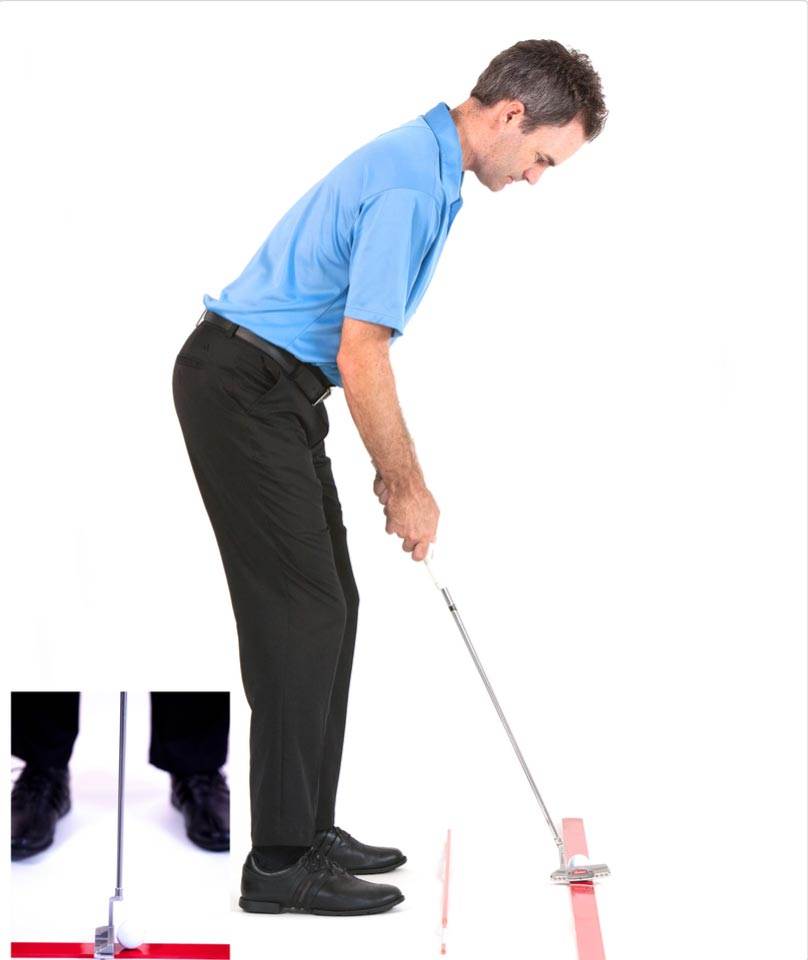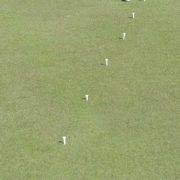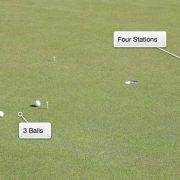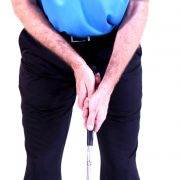Putting Stance and Stroke

Putting is probably the most important, yet least practiced area of the game of golf. Putting will account for over 40% of the shots taken in most rounds of golf, but remains the most neglected area of most players’ games. Most dismiss putting as mere luck, but I can assure you that there is just as much, if not more knowledge to be had around a putting green than on a practice range.
Two Dimensions
Putting is carried out on a 2-dimensional plane. There are only two factors to control in every putt that you hit: Distance and Direction. If each of these variables are correct, the ball will go in the hole. Sounds simple enough!
The Grip
Putting grips vary widely. I recommend going with what feels comfortable to you. Hold the putter as loosely as you can while maintaining control of the putter throughout the stroke. Soft, quiet hands will allow the putter to swing smoothly like a pendulum consistently time after time.
Alignment
Start with the blade of the putter. This is the main determiner of the direction the ball is going to roll. All modern putters are equipped with some sort of line, dot or aiming mechanism designed to help you set the putter face up precisely perpendicular to your intended line of play. Be sure that the sole of the putter is resting flat on the ground without the toe or the heel of the club raised in the air. The shaft of the putter should be leaning very slightly targetward.
Stance
With the putter properly aligned, the player’s shoulders, hips, knees and feet should be aligned somewhat parallel to the target line. The ball should be positioned slightly forward in the stance. Bend the knees slightly, tilting forward at the hips to bring the eyes over the golf ball. Let the arms hang naturally beneath the shoulders gripping the club where the hands naturally meet. The putter remains in the proper playing position as described above.
The Stroke
A putting stroke is a golf swing requiring very little power, but extreme precision – simpler is better. Keep the moving parts to a minimum by maintaining a stationary lower body. The club is moved not with the hands and arms, but by the shoulders. A triangle drawn across the shoulders and down each arm should remain in tact throughout the stroke. In a good putting stroke, the hands and arms provide none of the power and the core muscles are allowed to dictate all of the motion. Without hand rotation, the putter head should move straight back and straight through impact without clubface rotation. With this technique, the putter face will be aligned targetward throughout the stroke, not for only an instant in time as when the putter face is allowed to roll open and closed.
Distance Control
Poor distance control is the reason for 90% of all three putts. Provided the putting stroke does not involve multiple sources of power (hand release, wrist rotation, body weight shift, etc), the length of the putt should correlate directly with the length of the backswing. Simply stated, let the length of the backswing grow longer for longer putts, and shorter for shorter putts. Players with difficulty with distance control tend to either have a short backswing jabbing at the ball, or a long backswing with the putter decelerating through impact. These methods are impossible to calibrate, particularly when the player is anxious or nervouns. Everything remaining constant, let the length of the swing determine the distance the ball will travel.









